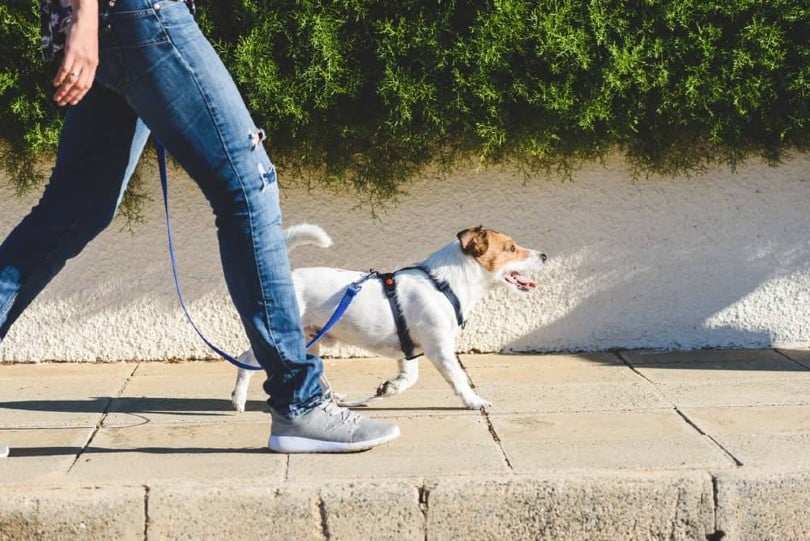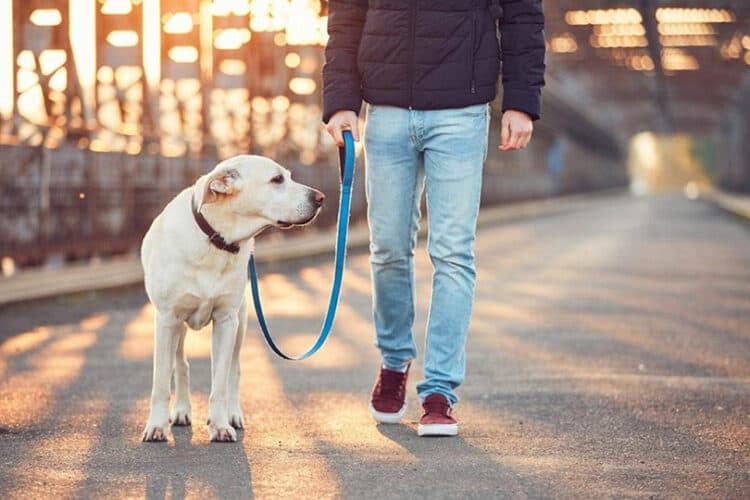Taking walks with your dog is one of the best responsibilities of having a four-legged companion. But the question of how often you should walk your dog doesn’t have an easy answer. It requires taking into account the breed of your dog, their age, health, and how active they are.
Dogs should be walked at least once a day if your schedule doesn’t allow for two or three outings. In between those times, you should let them out in the yard or take them out for a quick potty break. The more active your dog is or the larger they are, the longer or more frequent their walks should be.
If you’re a new dog owner and aren’t sure how to figure out how often you should walk your dog, this guide can help clear up any confusion.
How Often Should You Walk Your Dog?
All dogs benefit from regular walks, and a puppy is a great way for you to also get some fresh air. The amount that you should walk your dog can range from 15 minutes a day to 2 hours. However, there are a few important things to consider to ensure that your dog can keep up with you.
Age
On average, younger dogs need more exercise than older dogs. There are exceptions to this, of course, and your older dog might love long walks just as much as your energetic puppy. Remember to bear in mind their aging bodies, though.
While your senior dog might think that they can manage lengthy walks, their body might not be able to keep up. Older dogs are also more susceptible to arthritis or other health issues that can affect their mobility.
It’s your responsibility to make sure your dog doesn’t push themselves further than their age allows.
Breed
One of the biggest factors in how often you should walk your dog is their breed. Your tiny Pomeranian might be an energetic fluffball, but they can’t keep up with the hour-long walks that your German Shepherd might need. Smaller breeds also benefit more from shorter, more sedate walks and are often fine with a single walk a day. A larger breed will need to be walked farther.
The breed’s original purpose should be considered too. Working breeds or other highly active dogs will benefit from more walks because they have so much energy to spare. Longer and more frequent walks also help keep their minds active and fend off destructive tendencies.

Health
Your dog’s health can affect how far they should walk. Health conditions aren’t always limited to age. Illnesses or recent accidents can affect how far you should walk your dog too. It’s also worth remembering not to push your recovering puppy too much after their neuter or spay surgery.
Take short walks at a slow pace, and watch your dog to make sure you don’t push them too far. While they recover, you should keep their activity levels low, and once they’re healed, you can start to build up to longer walks again.
Living Conditions
Where you live is another factor to consider when walking your dog. If you have a yard that your dog can play in, you might not need to take them on as many walks. The same can be said if you live right next to a dog park. Encouraging your dog to play a game of fetch can help quell some of their energy. That’s not to say that you should cut out walks entirely, though.
If you live in an apartment, regular walks can be beneficial, even for a low-energy dog. You’ll be able to get them out of the house and encourage them to explore their surroundings outside the same four walls.
Why Should You Walk Your Dog?
There are many reasons that you should consider walking your dog regularly. Regular walks give your dog a chance to explore the neighborhood and put their noses to work learning about the world around them. It’s also a good way to spend time with your four-legged best friend.
You can take advantage of the health benefits, too. Walking keeps your joints active and lets you get a breath of fresh air away from work.
Final Thoughts
How often you should walk your dog can vary depending on their breed, age, and where you live. A small breed will benefit from a short walk and might be okay with one outing a day. A large breed or a highly active dog requires long and frequent walks to temper their energy levels.
Featured Image Credit: Shutterstock
















